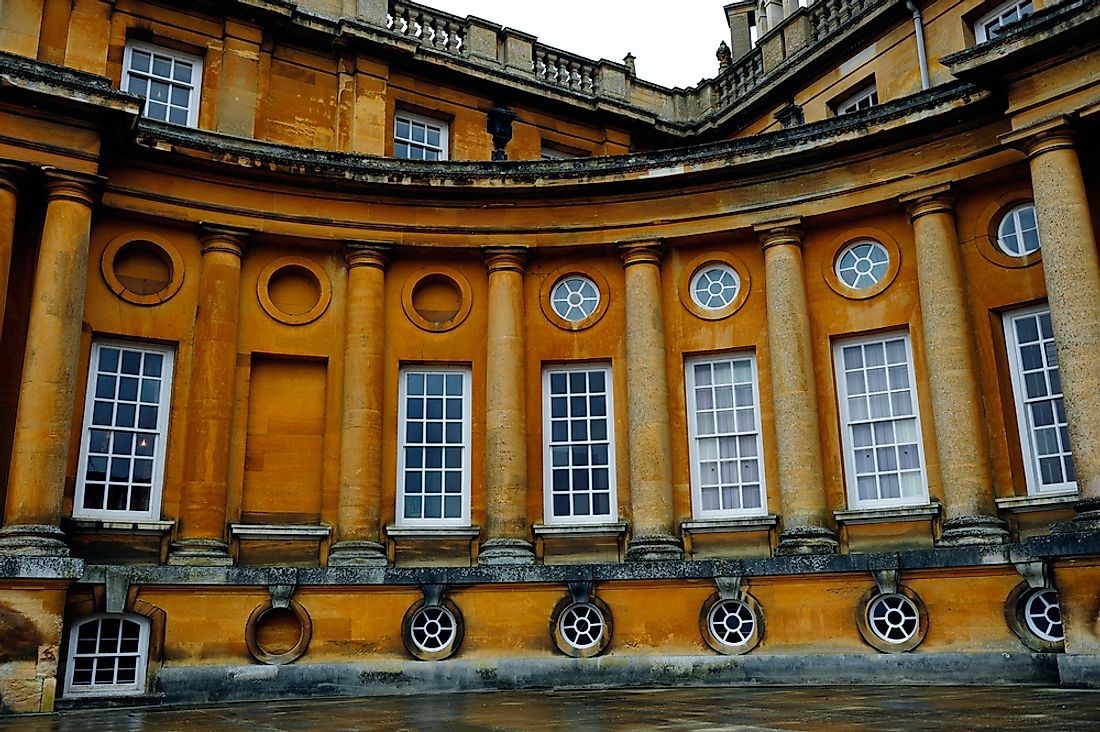The Grand Blenheim Palace In England: A UNESCO World Heritage Site In The United Kingdom

Blenheim Palace is a monumental country house found in England which serves as the principal residence of the Dukes of Marlborough. The palace is considered to be one of the largest houses in England and was constructed between 1705 and 1722. Blenheim Palace is the only non-episcopal and non royal country house found in England that holds the "palace" title. In 1987, UNESCO designated the Blenheim Palace as a World Heritage Site.
6. Location
The Blenheim Palace is located in Woodstock, Oxfordshire England. The estate was initially given as a reward by Queen Anne to John Churchill, the first Duke of Malborough. The site, sometimes known as the Palace of Woodstock was land owned by the crown. In reality the site of the palace was nothing more than a deer park.
5. History
Originally, the palace's building was intended to be a reward from Queen Anne to the 1st Duke of Marlborough, John Churchill. The reason behind the reward was because of Churchill's military victories against the Bavarians and the French during the War of Spanish Succession which resulted in the Battle of Blenheim in 1704. However, immediately after the palace's construction started, it became the course of political disagreements. As a result Marlborough went into exile, his duchess fell from power and Sir John Vanbrugh's architectural reputation was ruined.
4. Design And Architecture
The story behind the architect selected to work on the palace is controversial. Sir Christopher Wren, one of history's most highly acclaimed English architects known for St Paul's Cathedral was favored by the Duchess. However, in the long run, Sir John Vanbrugh, an English architect and dramatist was the one commissioned by the Duke to design the Blenheim Palace. Vanbrugh often worked and trained with Nicholas Hawksmoor, his associate. Working on Blenheim was not as easy as Vanbrugh had hoped since the Duchess did not like him from the beginning. Many issues arose from what was demanded of Vanbrugh mainly because the Duchess had been foiled in her wishes to commission Wren for the job. In the end, Vanbrugh was banned from the site while the work was being completed by Hawksmoor his architectural associate and friend. In 1725, Vanbrugh and his wife together with the Earl of Carlisle were refused admission to the palace even as members of the viewing public.
3. Surrounding Landscape
The southern facade of the palace has the primary state apartments whereas the east side has the Duke and Duchess's suites of private apartments. The western side along the entire length of the piano noble contains a long gallery initially created as a picture gallery, but it is currently a library. The east court of the Palace contains domestic offices, the kitchen, and laundry while the west court is adjacent to the indoor riding school, the stables and the chapel.The palace also features great statues, a water tower, and other assorted statuary as decoration for the roof. The palace's surrounding also features the extraordinary landscaped Park and Pleasure Gardens.
2. Things To See And Do
The palace, still home to the Dukes of Marlborough, offers a variety of interesting activities and things to see. The Palace of Blenheim, situated at the center of a huge undulating park is a good example of the English landscape garden movement and style. The Pleasure Gardens are linked to the palace by the Blenheim Park Railway which is a mini railway. Other things to see and do include, visiting gift shops, adventure playgrounds, fishing, butterfly house, bottled Blenheim Natural Mineral Water among others. Concerts and festivals are also staged at the park and palace.
1. The Palace Today
At present, about five miles through the Great Park area is accessible to the public according to the public rights of way. The palace grounds can be accessed from the Oxfordshire Way and also from Old Woodstock. Both access points are near the Column of Victory. The park together with the gardens and palace are open to the public at a maximum fee of £24.90 as of October 2016.











